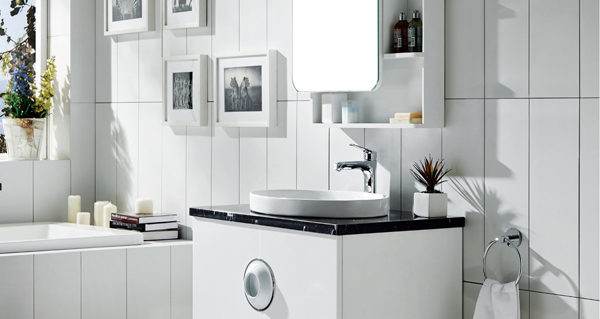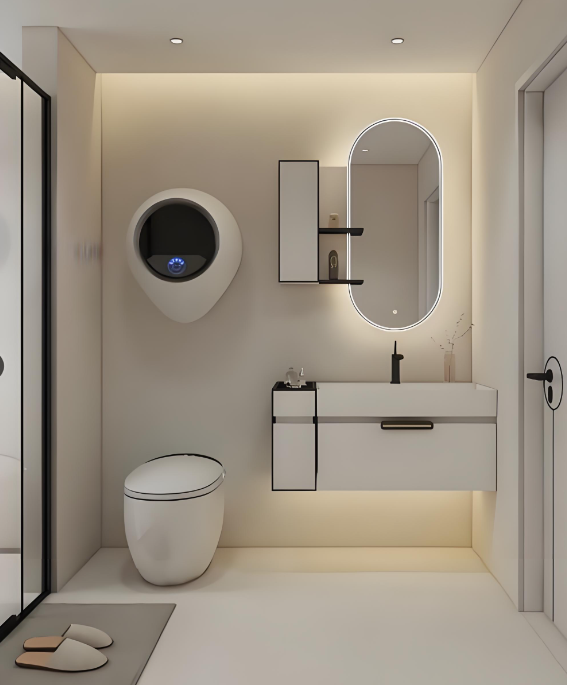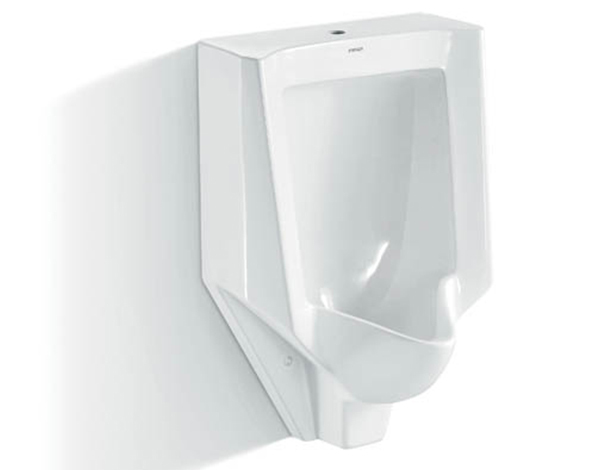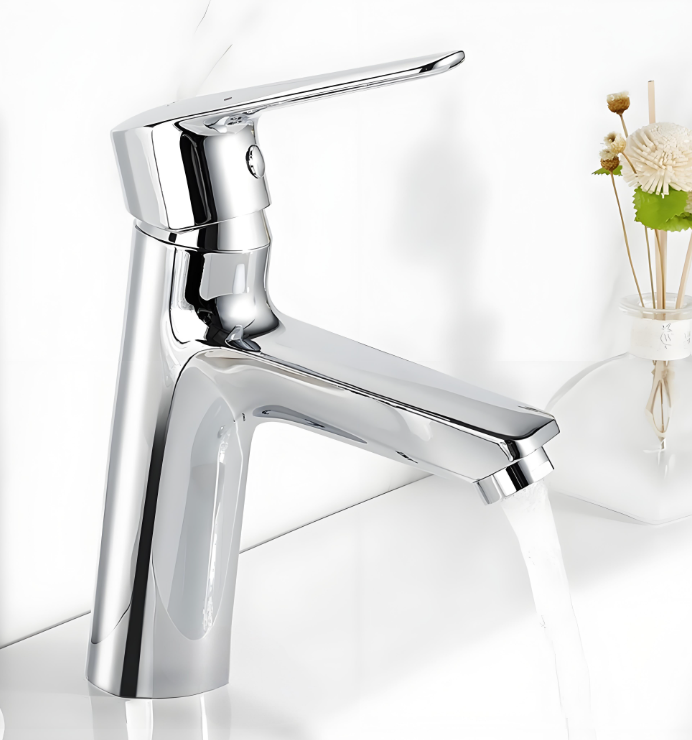Sanitary Ware and Bathroom Fixtures
Designing or renovating a bathroom requires careful selection of sanitary ware. High-quality fixtures not only improve daily comfort but also ensure long-term durability and hygiene. Below is a detailed guide to the main categories of bathroom sanitary ware, with practical tips for choosing the right products.
1. Washbasins

Bathroom washbasins are available in several types, including wall-mounted, pedestal, and tabletop designs. Each style has its own advantages:
* **Wall-mounted** basins save floor space and give a modern, minimalist look.
* **Pedestal** basins hide plumbing and offer a traditional, elegant appearance.
* **Tabletop or counter** basins are often chosen for contemporary bathrooms, allowing flexible design with cabinets.
A good washbasin should have a smooth, impermeable surface that resists stains, heat, cold, and everyday wear. The quality of the glaze is especially important because it determines the basin’s resistance to discoloration, its ease of cleaning, and its long-term shine. Increasingly, designers are also considering ergonomics and water-saving faucet integration when selecting washbasins.
2. Toilets

Toilets can be divided into **flush type** and **siphon type**, and by structure into **one-piece** and **two-piece** models. One-piece toilets look sleek and are easier to clean because there are no joints, while two-piece models are generally more affordable and easier to transport.
Among flushing systems, **jet siphon toilets** are widely recommended for their quiet operation and strong cleaning power, which helps maintain hygiene and prevents unpleasant odors. Many modern toilets also feature **dual-flush mechanisms**, allowing users to choose between a full flush and a half flush, reducing water consumption.
In addition, new high-end models provide **heated seats, automatic lids, bidet functions, deodorizing systems, and even night lighting**. When choosing a toilet, it is important to check water storage capacity: too much water can cause splashing, while too little water may leave waste and odors. The glaze should be smooth, bubble-free, and evenly colored. High-temperature firing ensures complete porcelainization, making the ceramic more durable and resistant to corrosion.
3. Bathtubs
Bathtubs come in various **styles and functions**:
* **By bathing method**: sitting baths, reclining baths, or multifunctional designs.
* **By function**: simple soaking tubs or luxurious massage tubs with water jets.
* **By material**: acrylic (lightweight and affordable), steel (durable but may lose heat quickly), and cast iron (extremely durable and retains heat well).
High-quality bathtubs can last more than 10–20 years, while poor-quality tubs age quickly, discolor, and develop scratches. Popular international brands include **KOHLER (USA), TOTO (Japan), and KORRA (China)**, which are known for durability and advanced designs.
In recent years, **freestanding bathtubs** have become a luxury trend, serving not only as functional fixtures but also as centerpiece furniture in bathroom design. Smart massage bathtubs now integrate air bubble systems, LED lights, and Bluetooth audio for a spa-like experience at home.
4. Shower Rooms
Shower rooms usually consist of **a door panel and a basin**. Panels may be made of PS, FRP, or tempered glass, with tempered glass being the safest and most popular option. Compact and efficient, shower enclosures are suitable for small spaces and help separate dry and wet areas, improving bathroom cleanliness.
Modern shower cabins often include **anti-slip flooring, anti-leak seals, quick-drainage systems, and glass treated with special coatings** that resist water stains and soap buildup. Some luxury versions come with **steam functions, overhead rainfall showers, and digital temperature controls**.
5. Urinals

Urinals, traditionally installed in public restrooms, are now gaining popularity in modern homes for their convenience and water efficiency. They are particularly useful in households with multiple male members, as they reduce toilet congestion. Compact wall-mounted urinals also save water and are easy to clean.
6. Hardware Accessories

Bathroom hardware includes a wide range of essential items: **faucets, towel racks, rings, glass holders, soap dishes, toilet paper dispensers, anti-fog mirrors, and shower curtains**. High-quality accessories not only improve bathroom functionality but also enhance aesthetics.
When choosing hardware, durability and resistance to rust are key factors. **Stainless steel and brass** are preferred materials. Increasingly, designers also opt for **matte black, brushed nickel, and rose gold finishes**, which give bathrooms a stylish, modern appearance. Small details like soft-close mechanisms for toilet paper holders or swivel towel bars can improve convenience and user experience.
7. Ceramic Quality
Ceramics remain the foundation of most bathroom fixtures. To judge ceramic quality, observe the glaze carefully: it should be smooth, glossy, and free of pinholes, bubbles, or uneven spots. High-quality ceramics are fired at very high temperatures, ensuring hardness, density, and resistance to corrosion.
A simple test is to gently tap the surface: a **crisp, clear sound** indicates high-quality porcelain, while a dull sound suggests defects or low density. Low-quality ceramics may also deform slightly, leading to poor installation or shortened lifespan.
Maintenance and Trends
Even the best sanitary ware requires proper care. Regular cleaning with non-abrasive products will maintain the glaze and extend the life of fixtures. Avoid strong acids or harsh brushes that could damage surfaces.
Current trends in bathroom sanitary ware emphasize **eco-friendliness, water-saving technology, and smart features**. For example, touchless faucets help conserve water, and intelligent toilets improve hygiene and comfort. Sustainable materials, such as recycled steel and eco-friendly ceramics, are also gaining attention as consumers become more environmentally conscious.
Expert Reminder
It is highly recommended to plan sanitary ware purchases at the **design stage of bathroom renovation**. This allows contractors to reserve space, adjust pipelines, and prepare proper installation conditions based on the specific requirements of chosen products. Careful planning ensures smooth construction and prevents costly adjustments later.
By selecting high-quality washbasins, toilets, bathtubs, shower rooms, urinals, accessories, and ceramics, consumers can create bathrooms that are not only functional and durable but also stylish, comfortable, and eco-friendly.
